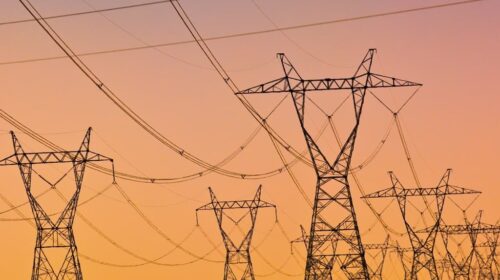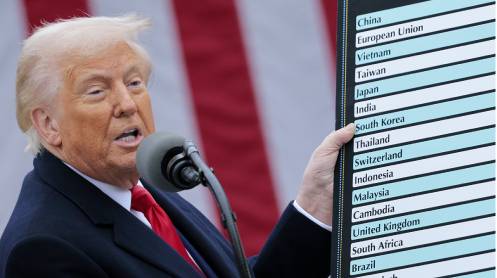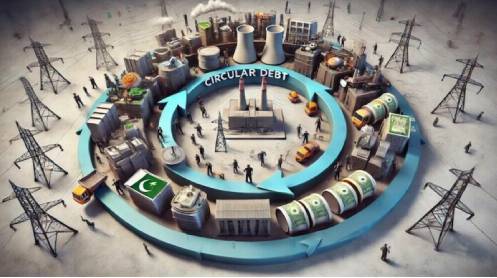The government has decided to further increase electricity prices by Rs2.8 per unit to collect an additional Rs292 billion from consumers aimed at bringing the vicious circular debt down that remains high despite massively increasing the prices.
A cabinet body on Thursday approved the revised Circular Debt Management Plan (July 2021-June 2023), which disclosed that from February to July this year, power tariff would go up by Rs2.8 per unit in two phases.
The decision has been taken according to an understanding reached with the International Monetary Fund (IMF) for the collection of an additional Rs292 billion from consumers between February 2022 and June 2023 to push the circular debt down. However, the revised plan showed that the consumers have been burdened more while the efficiency improvement targets have been eased further, suggesting the continuation of the policy to punish the consumers for the inefficiency of power distribution companies and bad governance by the ministry.
The Rs2.8-per-unit increase will be implemented in two phases on account of annual tariff adjustments, which have been agreed with the IMF, said the sources. Headed by Planning and Development Minister Asad Umar, the Cabinet Committee on Energy on Thursday approved the revised plan. The gap in consumer reference rate and the projected cost of power supply will be mitigated through timely increase in tariff, according to the plan approved by the CCOE.
The first increase of a minimum of 63 paisa is expected to be implemented from this month, which will yield Rs85 billion to the government till June next year.
However, the Ministry of Energy informed the cabinet body that the increase could be up to 75 paisa per unit due to the higher-than-expected currency devaluation.
In its report last week, the IMF said that the FY22 annual rebasing of tariff was on track to be notified by February 2022 as per the updated CDMP, which would help contain the monthly fuel price adjustments (FPA).
Another increase of Rs2.17 per unit will be enforced in July, which will place an additional burden of Rs207 billion on the consumers, according to the decision.
The revised Circular Debt Management Plan for the remaining period of Pakistan Tehreek-e-Insaf (PTI) government revealed that in spite of putting an unbearable burden on the consumers, the circular debt would be at least Rs448 billion higher than the level approved by the federal cabinet 10 months ago for the current fiscal year.
In the past four months, the government increased the electricity tariff by Rs3.83 per unit on account of quarterly and annual base tariff adjustments, which placed a burden of Rs368 billion on the consumers.
After the huge increase in tariffs, there is some hope that the circular debt will start coming down but the numbers indicate the opposite.
In March last year, when the federal cabinet had approved the original plan, it set the circular debt reduction target at Rs1.44 trillion for June 2022.
However, the revised plan showed that the circular debt would still be Rs1.9 trillion, showing a deviation of Rs448 billion within 10 months. Even in June 2023, the projected debt level is Rs1.53 trillion, far higher than what the PTI government took from the PML-N.
The way the debt grew during the first half of current fiscal year, it seems that the circular debt may remain even higher than the Rs1.9 trillion projected for June this year.
The Rs448 billion deviation from the March 2021 plan was because the government delayed the planned increase in electricity prices, said Federal Minister for Energy Hammad Azhar.
He said that the revised plan had been finalised in consultation with the IMF.
The Circular Debt Management Plan showed that in October the government increased the electricity price by Rs1.66 per unit to raise Rs164 billion through quarterly adjustments.
Then in November, the tariff went up by Rs1.39 per unit as part of the annual base tariff to raise Rs152 billion.
DISCOs’ governance
While the government has decided to increase the electricity prices, it relaxed the targets set to reduce line losses and improve the recovery of bills, admitting that it failed to bring improvement in the governance of power distribution companies.
Read: Power tariff goes up Rs4.3 per unit
In March last year, the government had planned to reduce the circular debt by Rs334 billion through a 2.12% reduction in line losses and the improvement in electricity bill recoveries by 5.73% till June 2023.
However, the revised plan showed that the government had reduced the gains from improvements by Rs103 billion to Rs231 billion that too seemed ambitious as a majority of gains had been shown in the next fiscal year.
For instance, the government had earlier planned to increase recoveries to nearly 95% of the billed amount, which has now been slashed to 92.5% – a deterioration of 2.5%.
Iesco’s recovery target has been reduced by 10%, Pesco’s 4% and Qesco’s 16% for the current fiscal year.
Circular debt situation
In spite of significantly increasing the electricity prices, the circular debt has more than doubled in three and a half years to Rs2.48 trillion due to the government’s failure to stem the systemic losses.
The ministry also submitted the circular debt report for July-December of fiscal year 2021-22 to the CCOE. The report showed that the power sector’s circular debt remained at Rs2.476 trillion.
When the PTI came to power, the circular debt was at Rs1.148 trillion that has doubled within three and a half years. The ruling PTI had promised to bring the circular debt to zero by December 2020.
In just six months, the government added Rs357 billion to the flow of circular debt. But the net increase was Rs196 billion in the first half of current fiscal year after adjusting for payments of Rs161 billion by the finance ministry against the debt stock.
On average, the circular debt increased by Rs32.7 billion per month even after adjusting the subsidies, which the government hoped would reverse in the remaining part of the fiscal year.
The first half circular debt numbers do not represent the complete picture as the debt is expected to be reduced by over Rs300 billion in the current fiscal year over the Rs2.28 trillion level of June 2021, said Azhar.
He said that some major revenue and cash adjustments would be made during the second half of the fiscal year, which would substantially bring down the circular debt.
CCOE showed its satisfaction that the flow and stock of circular debt was on the declining path, he added.
Rs357b debt breakdown
In the first half of fiscal year 2020-21, the government provided Rs17 billion lower subsidies against the requirements that then became part of the circular debt, according to the summary.
The government added another Rs67 billion in the circular debt on account of interest payments to the IPPs on delayed payments, which were 59% higher than the preceding year, according to the summary.
Similarly, an amount of Rs11 billion was added on account of interest paid on the Power Holding Limited loans, which were less than the previous year. This is despite the fact the consumers are also paying debt servicing surcharge through their monthly bills.
An amount of Rs100 billion was added due to a delay in passing on the planned increase in prices of electricity.
Another Rs67 billion was also added in the circular debt due to non-payment by K-Electric. The power distribution companies’ uncontrolled losses added another Rs46 billion in the circular debt – up by 68% over the preceding year.
The government added Rs66 billion in the circular debt due to less than targeted recoveries by the power distribution companies.





